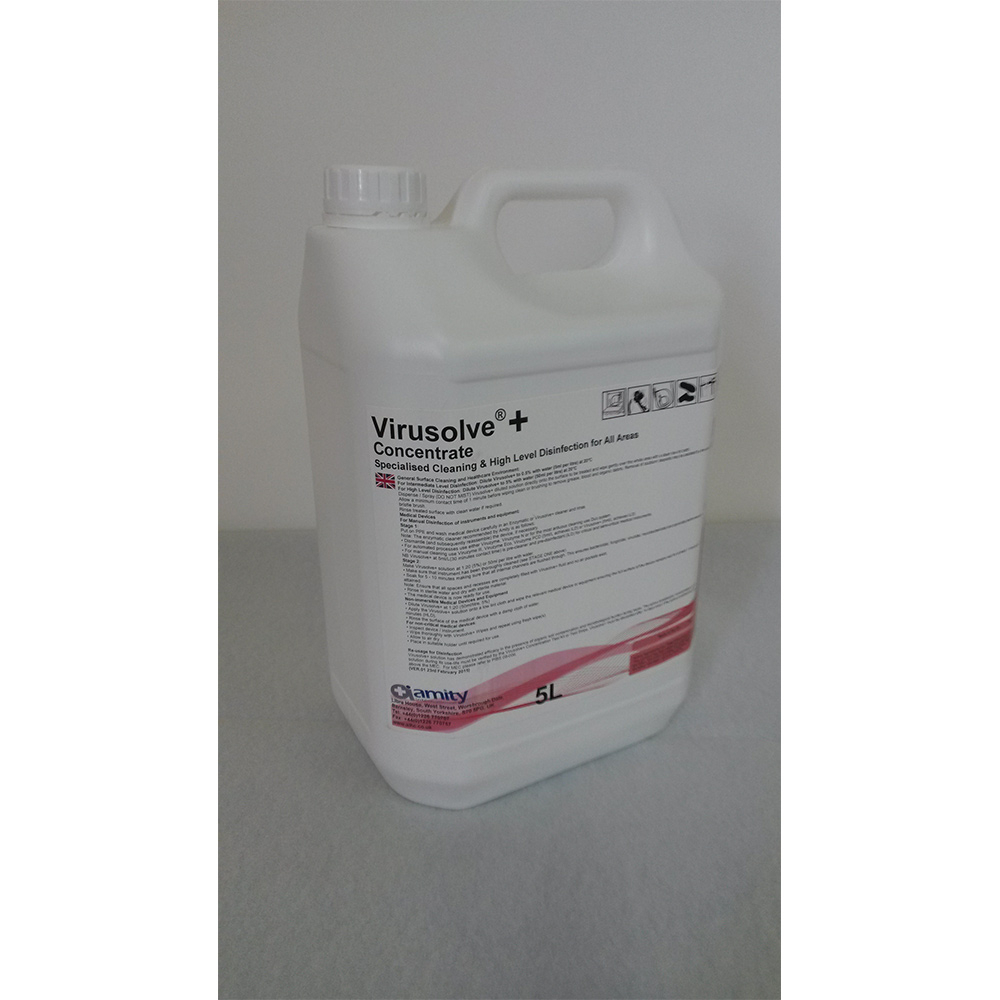[cs_content][cs_section parallax=”false” style=”margin: 0px;padding: 45px 0px;”][cs_row inner_container=”true” marginless_columns=”false” style=”margin: 0px auto;padding: 0px;”][cs_column fade=”false” fade_animation=”in” fade_animation_offset=”45px” fade_duration=”750″ type=”1/1″ style=”padding: 0px;”][cs_text]If you experience a Norovirus outbreak at your care home then it is important to contain it as quickly as possible.
To do this you will need to look at three key areas:
In this article, we look in detail at each area, giving you tips that will help you act quickly to contain the Norovirus outbreak.
Ensure affected residents get the correct medical attention
If you discover that several of your residents have been affected by a Norovirus outbreak, contact their GPs straight away and ask them to review the residents, depending on their clinical condition and medical status.
In particular, it is important that stool and/or vomit samples are obtained from symptomatic residents and staff, as these will have to be sent for laboratory testing to help establish the cause of the Norovirus outbreak or incident.
these will have to be sent for laboratory testing to help establish the cause of the Norovirus outbreak or incident.
You should also stop any bowel medicines that they are taking (i.e.laxatives and anti-diarrhoeal drugs), unless their GPs say otherwise.
Of course, in addition to residents being affected by the Norovirus outbreak, you may also find that some of your staff members become symptomatic. If this happens, they must be sent off duty and specimens should be obtained. Those staff must then not return to work until they have been without symptoms for 48 hours. However, with staff who handle food in your care home, you should actually consider excluding them for 72 hours after their symptoms have ceased.
Restrict the movement of affected residents and staff
A key component of containing a Norovirus outbreak is to keep affected residents as isolated as possible from other residents, staff and visitors.
For this reason, residents with symptoms of diarrhoea and/or vomiting should be nursed in their own rooms. They must also be given separate toilet facilities (i.e. toilet or dedicated commode) which have easy access to hand washing facilities.
If there is shared accommodation within the care facility, then it is worth discussing potential options to group residents (known as cohorting) with the Duty Room, Public Health Agency or, if the care home is a Trust facility, with the Trust Infection Control Team.
You should also try to avoid moving any care home residents while the Norovirus outbreak is on-going, unless this is medically required. However, if this is not possible, there are still useful precautions that you can take.
For example, if a resident is transferring to another service or to hospital, you should ensure that the receiving unit/service is informed of the Norovirus outbreak in advance, even if the resident is symptom-free. The ambulance and/or transfer service must also be advised of the Norovirus outbreak in advance, so that they can take the necessary precautions.
Likewise, you should stop any admissions and transfers of new residents into your care home until the Norovirus outbreak is over, which is at least 48 hours from residents exhibiting the symptoms of Norovirus.
Again, this may not always be possible, for example where an existing resident is returning to your care home after  being discharged from acute services (for example, is transferred back from hospital care). If this is the case then they can be put back into their own single room, so long as it has been terminally cleaned, where this is required.
being discharged from acute services (for example, is transferred back from hospital care). If this is the case then they can be put back into their own single room, so long as it has been terminally cleaned, where this is required.
They should then be nursed in isolation in their own room until the Norovirus outbreak ends, which is 48 hours after the last affected care home resident shows symptoms of the illness. Finally, you should also ensure that you restrict the movement of staff between floors and wings in the care facility during the Norovirus outbreak. What’s more, make sure you advise staff that they should not work in other care homes or other healthcare settings while the Norovirus outbreak is on-going.
As you can imagine, by restricting resident and staff movements in the above ways, you can help minimise the spread of the Norovirus outbreak.
Sanitize surfaces and ‘touch points’ in your care home
Another important measure you can take to help contain a Norovirus outbreak is to pay attention to sanitizing any surfaces and ‘touch-points’ that could carry the live virus.
As Norovirus can be transmitted through the faecal-oral route, carers should put on gloves and disposable plastic aprons to toilet or clean residents who have soiled themselves.
 They should then dispose of excreta into the excreta toilet or bedpan washer and process commode pots in a bedpan washer. Where this facility is not available, care must be taken when cleaning commode pots. The process should be carried out in a designated area with a deep sink using Virusolve+ diluted at 5% and hot water.
They should then dispose of excreta into the excreta toilet or bedpan washer and process commode pots in a bedpan washer. Where this facility is not available, care must be taken when cleaning commode pots. The process should be carried out in a designated area with a deep sink using Virusolve+ diluted at 5% and hot water.
Carers should also look to clean and dry the commode chairs after use with Virusolve+ diluted at 5%. This should include the seat, back, arms and frame.
If there have been any spillages of body fluids deal with this immediately. Meticulous environmental cleaning is essential, particularly in toilet and bathroom areas and in other areas which are shared. Use Virusolve+ diluted at 5%. This will not only kill Norovirus bacteria within five minutes of contact, but residual action will continue to work for up to 7 days, which will help to contain the infection.
During the Norovirus outbreak, we would also recommend that you use Virusolve+ diluted at 5% at least 3 times per day to clean ‘touch’ points such as toilet flush, door handles, grab-rails, taps and light-switches. Carpets and soft furnishings can should also be cleaned with hot water.
If any linen has been contaminated with faeces or vomitus, then place this in a water-soluble bag and transport it to the laundry without delay. At this stage, it is important that you do not manually sluice or hand-wash the linen. Instead, programme the washing machine to the pre-wash/sluice cycle and follow this with a hot wash.
After disposing of bodily waste or handling soiled bed linen and clothes, carers should remove their gloves with liquid soap and water, wash their hands with Virusan handwash and then dry their hands thoroughly with disposable hand towels.
Of course, in a Norovirus outbreak, even where surfaces are cleaned well they can still become ‘re-infected’. For this reason, hand washing is the single most important measure in preventing further spread of infection.
Make sure that all staff and visitors are regularly reminded to wash their hands with an antimicrobial handwash such as Virusan before entering and leaving your care home, and before entering and leaving each resident’s room.
Residents should also make sure that they wash their hands after using the toilet, before eating and at any other opportunity as required.
As food can also carry the virus, only serve hot cooked food during a Norovirus outbreak and remove exposed food such as fruit bowls from communal areas.
As soon as you are certain that the Norovirus outbreak is over, you should arrange to carry out a deep-clean of your care home, including drafting in additional staff as required.
This declaration of the Norovirus outbreak being over should also be confirmed by the home owner/manager to the Duty Room/Public Health Agency.
Of course, we hope that your care home will never be affected by the Norovirus. That said, if you do experience a Norovirus outbreak just following the simple steps above should help you get back to business as usual as soon as possible.[/cs_text][/cs_column][/cs_row][cs_row inner_container=”true” marginless_columns=”false” style=”margin: 0px auto;padding: 0px;”][cs_column fade=”false” fade_animation=”in” fade_animation_offset=”45px” fade_duration=”750″ type=”1/2″ style=”padding: 0px;”] [/cs_column][cs_column fade=”false” fade_animation=”in” fade_animation_offset=”45px” fade_duration=”750″ type=”1/2″ style=”padding: 0px;”] [/cs_column][/cs_row][/cs_section][/cs_content]
Cairn Technology Ltd
G4 Business Centre
19 – 21 Carlisle Street East
Sheffield
S4 7QN
0333 015 4345
info@cairncare.co.uk